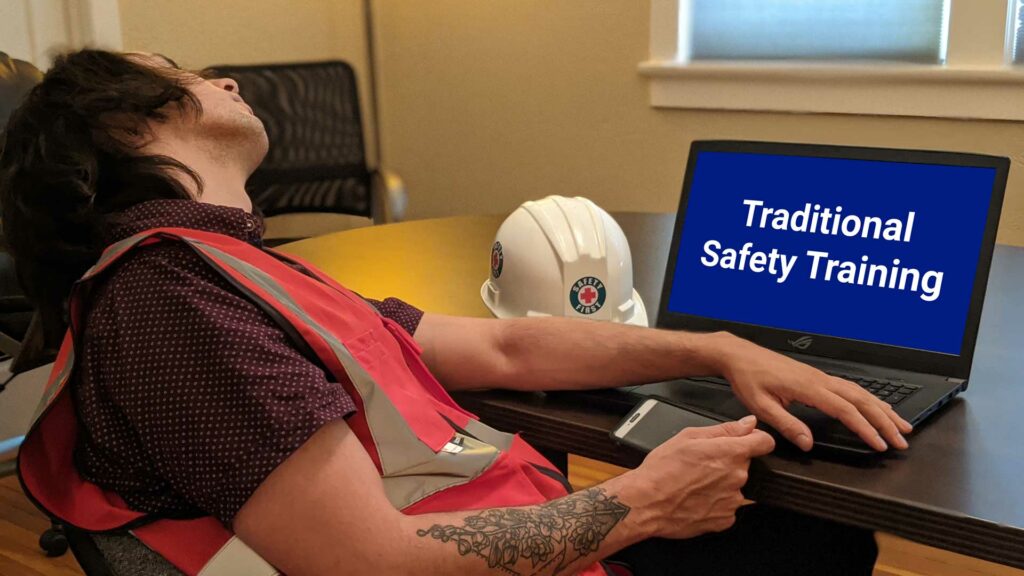Why is it Difficult to Engage Adult Learners Regarding Safety Training?
One of the main problems with training engagement in the 21st century is the increasing difficulty of capturing and maintaining learners’ attention. With the proliferation of technology and information sources, learners are often distracted and have shorter attention spans. This makes it challenging for trainers and educators to design and deliver training programs that are effective in engaging learners and ensuring knowledge retention.
Another issue is the changing demographics of the workforce. Today’s learners come from diverse backgrounds, cultures, and age groups, each with their own unique learning styles and preferences. Trainers must find ways to engage learners from different backgrounds and create a learning environment that accommodates their different learning styles.
Furthermore, the COVID-19 pandemic has accelerated the shift towards remote and online learning, which presents new challenges for training engagement. Virtual training can be isolating and lacks the social interaction and hands-on experience of traditional in-person training.
To address these challenges, trainers and educators can adopt innovative and engaging training methods that incorporate gamification, multimedia, and interactive tools. Gamification can make learning more fun and interactive, while multimedia and interactive tools can make training more immersive and memorable. They can also personalize training to the needs of individual learners, catering to their unique learning styles and preferences.
In addition, trainers can create a collaborative and supportive learning environment that fosters social interaction and provides opportunities for learners to connect with each other and with their trainers. They can also use data analytics to track learners’ progress and provide personalized feedback and support.
Studies have shown that higher engagement in training can lead to better course content retention. When learners are engaged in the training process, they are more likely to be actively involved and focused, which can improve their ability to learn and retain information.
Engagement can be increased by using interactive and immersive training methods, such as VR, gamification, or simulations. These methods can provide learners with a more dynamic and realistic experience, which can help them to better understand and remember the information being presented.
Studies have shown that engaged learners are more likely to retain information and apply it to real-world situations. For example, a study conducted by the American Society for Training and Development (ASTD) found that learners who were actively engaged in their training had a 25% higher retention rate than those who were not engaged.
Specifically, How Can Virtual Reality (VR) Help Engagement?
VR training simulations can help increase learner engagement because it allows learners to experience potentially hazardous situations in a controlled environment. With VR, learners can gain practical experience and develop muscle memory for different safety procedures without being put in actual danger.
In addition, VR can provide a more immersive and interactive experience than traditional training methods, which can help to improve retention and knowledge transfer. By using VR technology, learners can also receive instant feedback on their actions, which can help them to learn faster and more effectively.
VR safety training has the potential to enhance engagement, retention, and knowledge transfer by creating a realistic, immersive, and interactive learning environment.
Overall, to overcome the challenges of training engagement in the 21st century, trainers and educators need to adopt innovative and personalized training methods that are tailored to the needs of individual learners and provide a collaborative and supportive learning environment.


